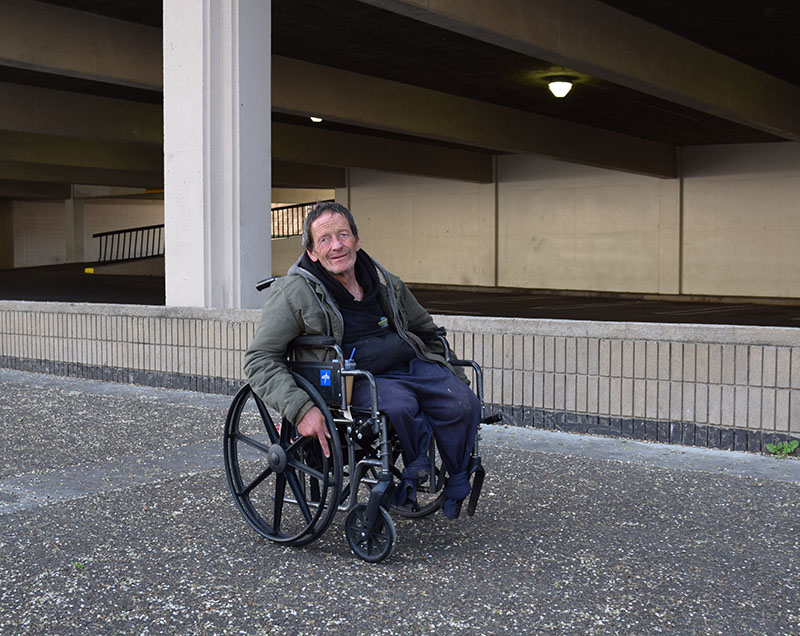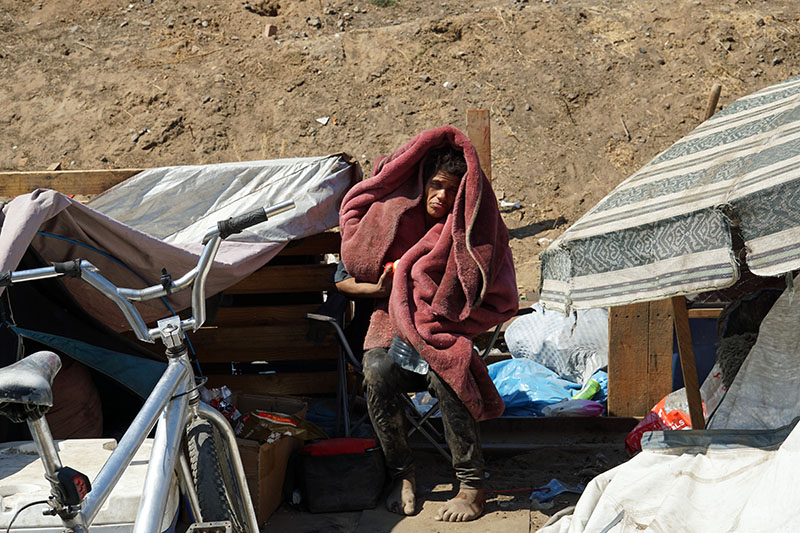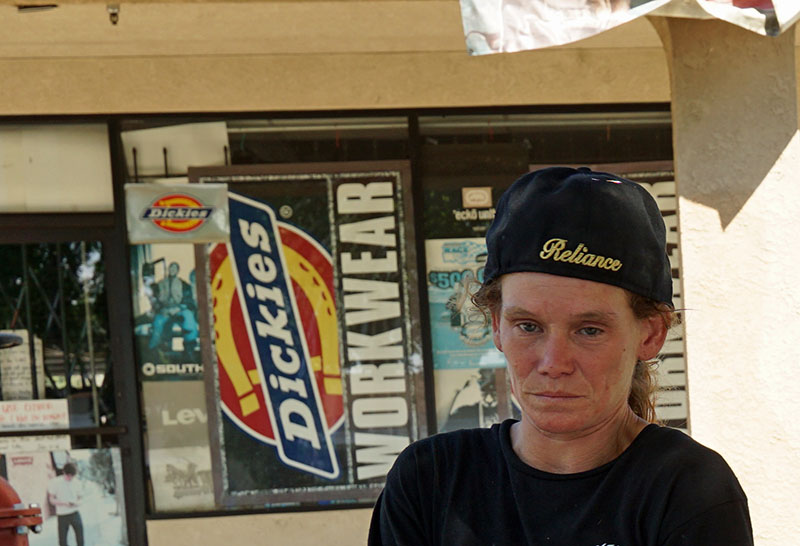“Despite enormous funding for homeless programs, and despite the fact that there are many individual successes, overall the system to date has not reduced homelessness.” Stanislaus County Civil Grand Jury, June 2022
Voluminous evidence shows that most people experiencing homelessness suffer from forces beyond their control. Despite this evidence, far too little has been done to alleviate their plight. The vast majority of American citizens help people in need whenever they can. Why, then, have we failed to help homeless people?
One reason is that facts about homelessness are too often suppressed in favor of misleading memes, myths, and misinformation. Far too many of us have closed our minds to the truth in favor of comforting fictions.
Consider the following conclusions from a study published on May 22 by the Stanford Institute for Economic Policy Research (SIEPR):
- California’s homeless crisis is associated with high housing costs, inadequate shelter spaces, deinstitutionalization, and changes in the criminal justice system.
- To reduce the unsheltered homeless population, more shelter capacity and increased investment in cost-effective housing are needed.
- A large share of the chronically homeless suffers from drug addiction and mental health problems. More treatment facilities and lower barriers for treatment are needed.
None of the conclusions reached by the Stanford study suggests that homeless people “choose” to be homeless or don’t want help. Nonetheless, far too many people favor such erroneous claims about homelessness over contrary facts and evidence.

Another popular misconception about homeless people is that most are miscreants who deserve their fate. In this scenario, people become homeless because they’re too lazy to work or prefer a life of crime or drug use to honest labor. In fact, the homeless population features large percentages of mentally ill, physically and mentally disabled, elderly, and working poor who either can’t work or can’t earn enough to afford housing when they do work.
One reason for the widespread belief that homeless people don’t want help is directly related to the need for more treatment facilities. When demand for treatment exceeds capacity, shorter treatment time and longer waits for treatment become routine; most cases of mental illness and addiction need far more treatment than is available.
Moreover, because of a severe shortage of transitional housing options, the vast majority of homeless people emerge from treatment with nowhere to go except back to the streets, where stress and insecurity make recovery nearly impossible. From 2007 through 2020, transitional housing options in California dropped by almost 50%. During that same period, homeless numbers rose dramatically.
It’s not difficult to understand that after several fruitless “recoveries,” many people don’t see the point in another round of rehab, one reason for the deceptive notion that, “they don’t want help.”

Many of California’s political leaders understand the factors driving homelessness but are comfortable with the status quo because so many people remain willing to blame homelessness on the homeless. Because a great many of these same leaders are risk-averse, they much prefer inaction or ineffective sweeps and misleading stories about “outreach” efforts to measures that would actually alleviate the suffering of poor people.
A recent study by the Stanislaus County Civil Grand Jury offers a case in point. The study discovered a glaring lack of accountability throughout the county’s systems of care:
- Despite enormous funding for homeless programs, and despite the fact that there are many individual successes, overall the system to date has not reduced homelessness.
- There is insufficient accountability for the effective use of homeless funds. While many agencies are accountable to their funding sources, primary responsibility for measuring accountability and effectiveness rests with the Community Services Agency, the Community System of Care, and the Stanislaus Homeless Alliance.
Ironically, Stanislaus County officials acted swiftly and efficiently when they felt threatened by litigation after a Ninth Circuit Court ruled that homeless people occupying public spaces couldn’t be forced to move if no other options were available. Almost immediately, county and city officials approved camping in a Modesto city park. Not long afterwards, when the threat of litigation diminished, sleeping in public places once again became illegal.

Though elected officials statewide have the capacity to approve safe ground camping, they are unwilling to do so if the only motive is to comfort the afflicted through acts of mercy. The suffering of physically and developmentally disabled, psychically injured, and destitute people isn’t enough to move them to action.
Their excuses are often risible. They will cite trash and drug use at low barrier campsites as reasons against camping, even though both trash and drug use are rampant on the streets, in the parks, and anywhere else homeless people are forced to squat.
When the threat of a lawsuit provides more motivation for action than human suffering, we have sacrificed humanitarian virtue in favor of political expedience.
Forcing the mentally ill, the developmentally and physically disabled, the elderly, the infirm, the psychically injured and destitute to live in the dirt without fundamental necessities like toilets and running water is inhumane. Every day we enable such hardened indifference contributes to the establishment of a practice and principle of public cruelty. It is a curdling of our hearts and loss of humanity we will deeply mourn when it’s gone, most likely sooner than later.
We are sowing grapes of wrath and reaping a harvest of cruelty.

The first thing that struck me Mr. Caine is that you’re being too polite. You only show 3 pictures when there are hundreds, if not more, that could be posted. Of course in some cases, no number of pictures will raise compassion to the level needed for action.
But for those readers of this article who may be curious to know more, take a ride to just about any part of your county and you can see human wreckage just about anywhere. You don’t have to stop and engage, just look and ask yourself as a compassionate human being: what can I do to alleviate this suffering and prevent even more?
If there are enough of us who engage as a caring community, we can bring dignity to those who need it most. In these cases, as Mr. Caine spoke to, it’s the basics of shelter, hygiene, and health care.
[…] Story continues […]
The writer does an excellent job of describing the problem but offers nothing in the way of a solution to it.
Obviously, there has to be an answer and a means to relieve, if not eliminate, these problems. To me, the key lies in the third bullet point from the Stanford Institute study;
*”A large share of the chronically homeless suffers from drug addiction and mental health problems. More treatment facilities and lower barriers for treatment are needed.”
We must encourage our legislators to make changes to our statutes to allow us to clear our public areas of these encampments and to mandate the professional evaluation and treatment of those individuals affected in resident programs until such time as it can be determined that they can once more care for themselves as productive members of society.
Alternatively, some will be candidates for care in longer care programs rather than simply being returned to the streets. These individuals would have access to legal representation, at public expense, to minimize errors in the system.
We must make the investments.
Mr. Losh: The immediate solution proposed in the essay is safe ground camping. As for your “mandate the professional evaluation and treatment” proposal, where do you house the people for treatment? As noted above, there is insufficient housing. Also, where do you house the remaining (majority) of people who are not in need of treatment? You conveniently overlook facts; that is an ongoing problem with homelessness. The most elementary fact is that we do not have enough cost-effective housing options; in fact, we don’t even have enough housing options of any kind.
Solutions? The one that can’t be talked about because propaganda has been so effective in demonizing any idea that has the word ‘social’ in it as it’s equated to the evils of communism!!
The C word we should be talking about is Capitalism and it’s rewards to satisfy human greed.
For a period we had a safety-net, but even that was too much for the insatiable greed of the powerful and want-to-be powerful not willing to share in our country’s abundance.
Today, the safety-nets are all the uncoordinated non-profits that feed from the public trough within a bureaucracy that accomplishes not much more than reporting on its expenditures of those funds. Those funds by the way are chump change compared to what is needed to provide a healthy environment for the least of us to flourish.
Let’s not be distracted by the propaganda machine and do the right thing by forcing government to work for all the people. That’s all government, especially local where we have the most control.
You made a valid point, Frank.
Reminds me of when I entered college to complete a Human Resource degree in Addiction Studies, and, complete the required certificate program necessary to counsel addicts. I could not counsel anyone who was using drugs, including alcohol, without a certificate, in any of the 50 states.
Because that degree, and my next choice of degree’s breadth requirements had me taking courses such as Sociology and Psychology, the head Police Officer on campus, in whose office I worked at the time, called me: Pinko. Then everyone present snickered out loud. At the time, I had no clue why he called me that.
His attitude was so negative about so many campus issues, I chose not to work under him. I eye witnessed how his bad attitude and lack of action had almost caused the death of a child visiting on campus. Thus, I reported him and then transferred to another position.
I had been warned to not reside in the Valley, at the time I had disclosed I was moving to CA. My immediate question was: “why not?” I was asked, “do you know what a redneck is?” To which I replied, “No.” The response I got back was, “then stay away from the Valley, and you won’t have to find out. They are not your kind of people.” I thought that a very very odd encounter.
Wouldn’t you?
I do now find myself wondering if the Valley has many people who do not see people and issues as I do. Could we be so different?
For starters: I want to know why anyone would not sacrifice to chip in and pay for some safe ground(s) to develop. Anyone of us could find ourself needing a safe, healing place to live. I am no pinko and no one need be to want to be on the side of social justice. People can earmark their contribution to specified groups of those who are in need. Let us be very practical. If you do not want to donate to those addicted, that is your choice. If you do, that is fine, too. No wrong choices, just donate.
A bank account can be opened, with full transparency and accountability kept. There are ways to do this. We can work this on our own and show government how it can be done. My patience is thin.
From my point of view, capitalism, communism, and socialism all fall short. Enabling this Humanitarianism Crisis is beneath us. We can cooperate.
Would others of you comment about this?
This type of information should always be the preface to any discussion on the homeless. Before all the silly bumper sticker slogans and whackjob (political) fictions get tossed around, a basic view of the facts is helpful. Lots of veterans out there, and the average monthly payment for disabled people is way under what it costs to avoid homelessness. Healthcare bankruptcy is a major cause for people becoming homeless too.
Chances are there are more perverts in the congregation (or running it) than there are living by the dumpster behind the church.
Well, Mr. Caine, normally we don’t agree on politics, except in the issue of Water issues. This ‘article’ does take a stab at pointing to possible solutions. Millions and Billions continue to be spent on homeless ness by the government agencies locally, county wide, state wide and Nationally. I would challenge to you find a few programs that actually work, vs. only putting forth what isn’t working. Government agencies cannot fix this problem- but they can help- it will take a lot of patience and a few real non profits to make a dent in the homeless problem. Mental Health, temporary housing options, drug addiction and other smaller faceted solutions are what will start to get this going. Unfortunately during an election year, politicians are looking for a quick solution (there isn’t one). Using a warehouse to house the homeless seems to be the pattern around here – it won’t work. I know of some people who used to be homeless and found a way out. the desire to get back on your feet is tantamount to getting out of that rut. I don’t claim to have the solution. And most certainly, the government doesn’t have the solution as well.
Thank you Mr. Woods. Non-profits dominate efforts to address homelessness throughout the San Joaquin Valley, and many receive government funding. The evidence they are not succeeding is all around us. As the Stanislaus County Civil Grand Jury noted, lack of accountability is a fundamental problem. As for government, there is no other entity with enough funding to deal with homelessness; the problem is enormous and growing.
Homelessness often occurs at home. Many young adults repeatedly make bad decisions that force families to make tough decisions when treatment and recovery strategies fail. After several years on the streets–a once bright young man becomes a total stranger to his loved ones–mentally and physically. Family support is not without limit. Former County CEO Risen was on the right track with his family focused approach–but when activist groups commandeer projects and county staff lead projects into the ground–failure is inevitable. The focus becomes not on the individual–but the budget cycle of the program. The sad reality is homelessness starts and ends at home. Government is obligated to manage the blight on the public right of way AND enforce ordinances. The problem of the polis is misplaced expectations. Two solutions: 1) Enforcement: enforce panhandling, littering, and no camping ordinances and hold property owners accountable for non compliance. 2) Manage Agency: Local governments play budgeting games. Agencies use FTE numbers to fudge department budgets to create the illusion of shortfalls. There is no need for a local tax–as there IS plenty of funding to be found within existing revenue sources. Off Hackett Road there is plenty of county owned land to build shelters for those who need it–why not also use the old animal shelter off Mitchell across the airport) to house their pets? To me, the answers are within existing margins–the problem is–no one wants to look either because it’s now a homeless industrial complex issue and/or it’s a crisis too convenient to solve.